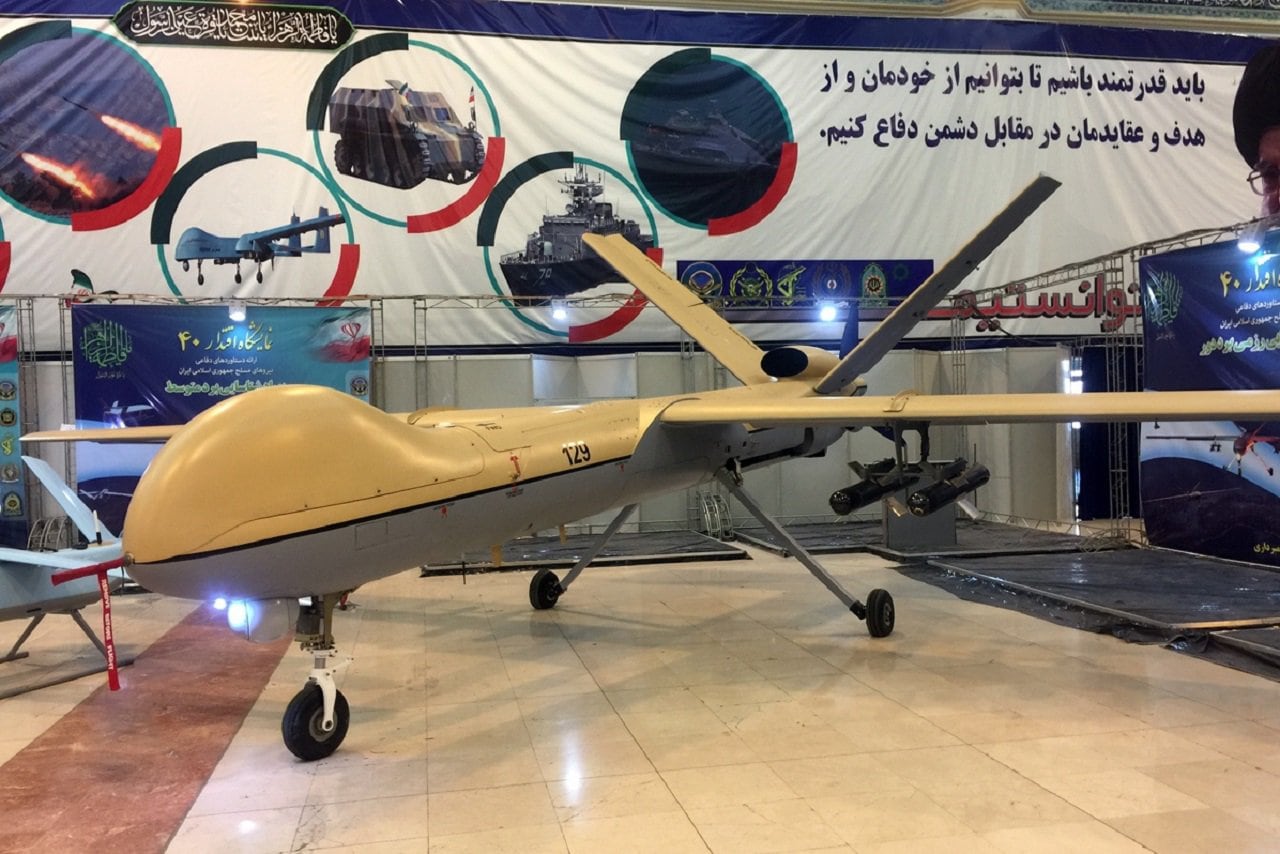The head of Iran’s ground forces claims the regime has developed a long-range suicide drone capable of striking Israel’s Mediterranean coast, according to state-run media outlets. Brigadier General Kiomars Heidari announced that the latest variant of the Arash-1 drone, the Arash-2, was specifically created to target the Jewish state’s Haifa region. Heidari boasted that “we (Iran) are waiting orders to deploy it one day,” adding that Iran would “reveal its capabilities in future drills.” Tehran’s aggressive rhetoric threatening Israel marks the latest incident in a series of escalations amidst the ongoing Iranian-Israeli “shadow war.”
Why the regime has made drones its weapon of choice
Moscow’s ongoing invasion of Ukraine has highlighted the increasingly prevalent role unmanned aerial vehicles (UAVs) play in modern warfare. These small, relatively inexpensive, and easily operated weapons are ideal for use by rogue states. As further explained by the Jerusalem Post, since a drone does not necessarily need to feature a radar that exposes its launch location, its source may not be obvious. This capability has emerged as the centerpiece of Iran’s regional tactical strategy. The regime has been able to deny responsibility for dozens of drone attacks in recent years due to the ambiguity of where the weapon originates. Since the 2020 U.S.-led killing of revered Islamic Revolutionary Guard Corps (IRGC) Gen. Qassem Soleimani, Tehran has significantly ramped up its drone operations vis-à-vis proxy groups. The lethality and sophistication of Iran have increased quite a bit over the last two years.
A piece published in the Jewish News Syndicate acknowledged that Iranian drones “have been extensively used in a broad spectrum of operations, including retaliation against Islamic State (ISIS) bases, battlefield support of the Assad regime forces in their campaign to regain control in Syria, in attacking cities, national infrastructure and oil targets in Saudi Arabia, and in targeted killings of high-ranking officers and officials of the internationally recognized Yemeni government.” In recent years, Iranian-affiliated proxy groups in Iraq and Syria began to use explosive-laden drones to attack U.S. personnel and military assets in the region. Last October, at least five drones laden with explosive charges struck the al-Tanf garrison in Iraq housing U.S. military personnel.
The “Arash” family of drones
According to Iranian-state media, the regime’s new drone, reportedly capable of striking Haifa, derives from an existing UAV, the Aresh-1. Iran Press describes the Arash-1 as the world’s “longest-range suicide drone with high precision.” Iran’s Vice Admiral Mahmoud Mousavi proclaimed “With the efforts of the experts of the Islamic Republic of Iran Army, the continuous flight of the army’s destructive drones has increased up to 2000 kilometers. Reaching the range of 2 thousand kilometers in a suicide, anti-radar drone has made the Islamic Republic of Iran the holder of the longest range of these UAVs in the world.” The Arash-2 is supposedly an even greater UAV, however, Tehran does not have the best track record when it comes to exaggerating the actual capabilities of its platforms.
A few weeks ago, a Ukrainian news outlet alleged that Iran replicated Israel’s “Spike” anti-tank missile and installed it on a drone. The IRGC reportedly integrated the Spike copy to the Mohajer-6 UAV, which is one of the platforms the regime is believed to have sold to Moscow. Over the summer, U.S. officials revealed that Iran was set to deliver hundreds of drones to the Kremlin to aid its war efforts in Ukraine. In August, Russian Forces began to undergo drone training in Iran, according to White House officials. The New York Times reported that Iran’s Mohajer-6 drone was among the weapons delivered to Moscow. This surveillance and the combat-capable drone have the ability to fire four precision-guided munitions.
Explaining the timing of Iran’s recent declaration
Since Iran is clearly trying to sell its most advanced drones to Russia, in part to strengthen ties with its similarly rogue ally, its debut of its Arash-2 could be related. Turkey’s Bayraktar TB2 drone has proven to be a profitable export for Erdogan as it has emerged as the mainstay of Ukraine’s drone arsenal. The regime is likely exploiting the conflict to try and shore up foreign customers to purchase its new drone. Additionally, recent reports suggest the ongoing attempts to salvage the U.S.-Iranian Joint Comprehensive Plan of Action (JCPOA) have faltered. The regime could be announcing its ability to project power over Israel or any U.S. ally for that matter to scare the White House into providing more concessions to Iran.
Maya Carlin is a Middle East Defense Editor with 19FortyFive. She is also an analyst with the Center for Security Policy and a former Anna Sobol Levy Fellow at IDC Herzliya in Israel. She has by-lines in many publications, including The National Interest, Jerusalem Post, and Times of Israel.

